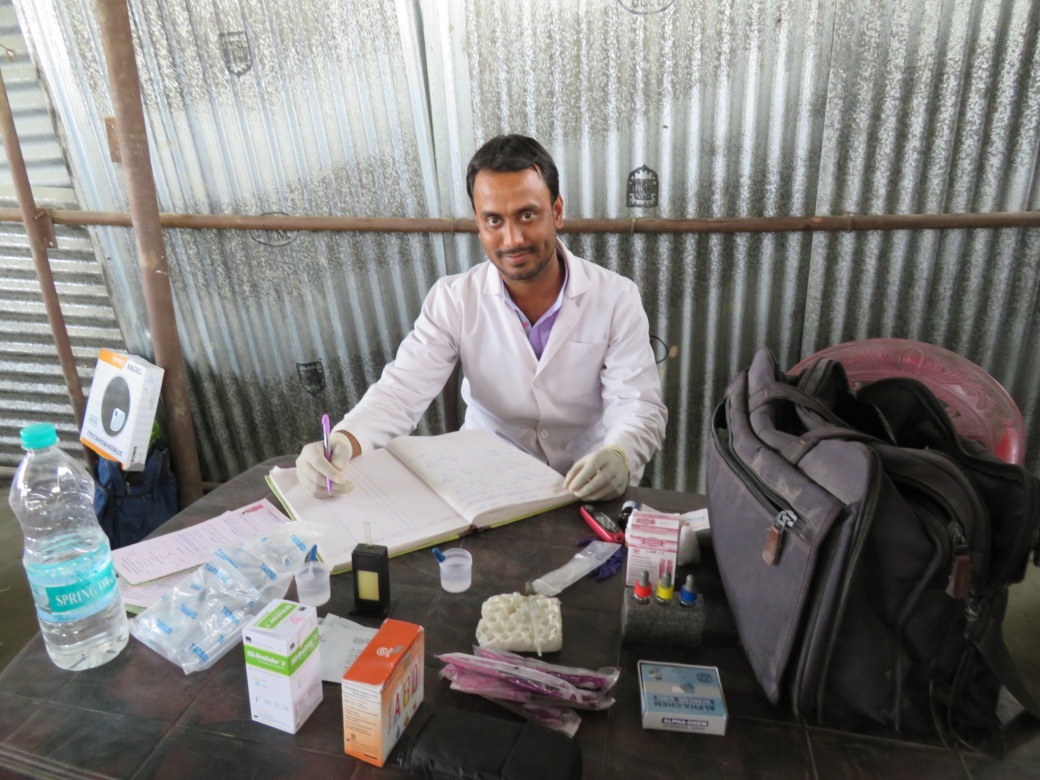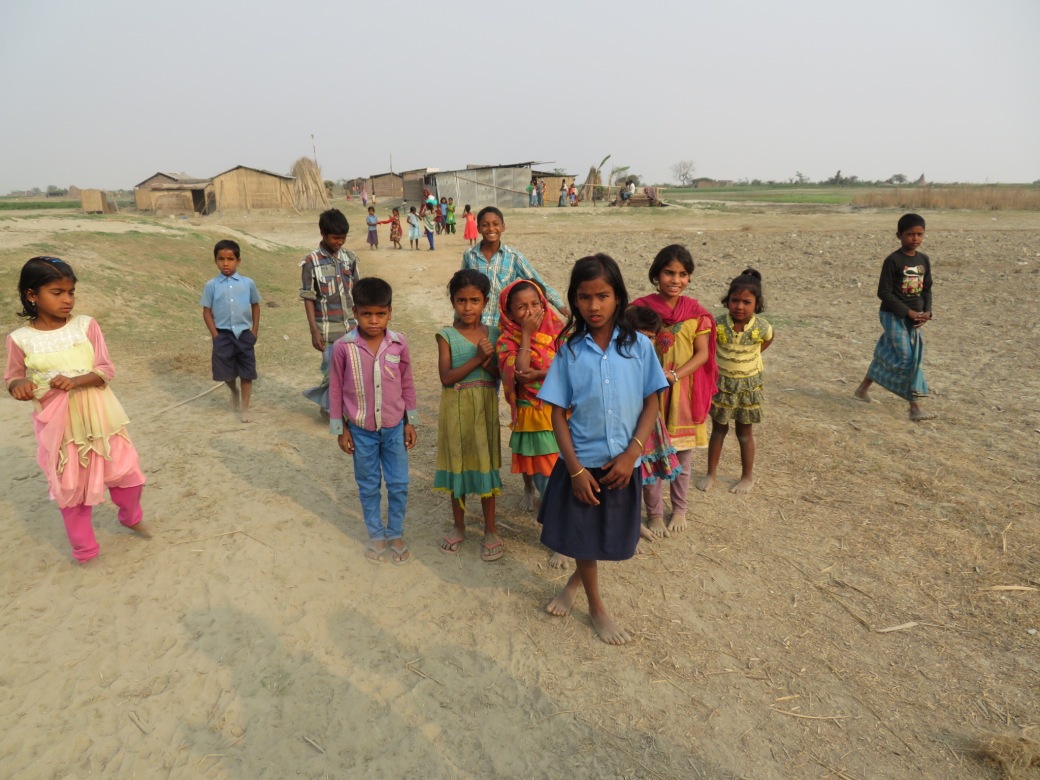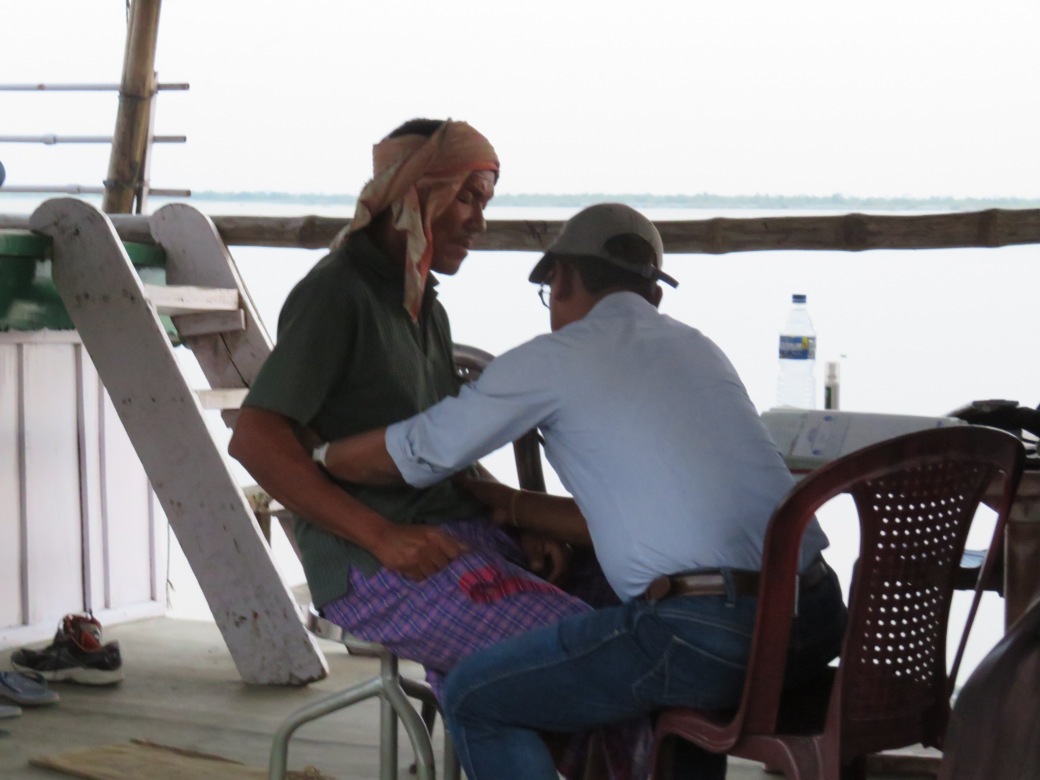
Anaemia
Anaemia is very prevalent throughout Assam, but we noticed it was more common in Upper Assam. This surprised us because from our short experience here, we got the feeling that the communities in upper Assam were indeed richer and better educated than in lower Assam. The main cause that everyone we asked pointed out was the problem of a rice based diet. From our point of view, nutrition may not explain all the differences observed, and there may be other determining factors as genetic causes and complications during delivery leading to an extended postpartum haemorrhage. Also talking to Dr. Tulika Goswami we speculated that the reference values used to assess the levels of haemoglobin are not well adapted to the Assamese population and new studies to determine these reference values should be carried out.

Infectious diseases
– Tuberculosis
Tubberculosis, or TBC, is a respiratory disease that can spread very quickly. That’s why in western countries there are strict guidelines to diagnose any person who has been in close contact with a TBC patient, and give profilactic treatment if necessary. In India, TBC is a very prevalent disease. Children are vaccinated with the Koch’s vaccine, which helps reduce the severity of the disease, but doesn’t give full immunization. Since it’s such a frequent infection, the care of the suspected tuberculose patient is different. They consider that everyone has been in contact with the bacteria so they never treat a suspected case, just the confirmed ones.
– Skin infections
They are very common throughout Assam. The factors that contribute to this situation are mostly environmental like not wearing shoes, close contact with water, working in the fields, and poor hygiene.

-Worm and protozoa infestation
They are also very common in the villages we visited. The same environmental conditions mentioned before may have an impact on their high prevalence, but also eating undercooked food is a major risk factor. The boat clinics conduct a deworming campaign twice a year among children. In addition, any patient referring compatible symptoms will be given treatment.

Muscular pain
Most of these villagers work as farmers in the field, which involves long hours squatting and crouching. For this reason they usually complain of muscular pain. What surprised us is that they seek for immediate relief rather than a long one: they ask for an injection of painkiller, and the doctors have to convince them to take oral medication afterwards.
Family planning
In upper Assam, the communities we visited were more open to family planning and had fewer descendents. A big influence in this situation might be religion because in the predominantly Muslim communities in lower Assam the preachers have been speaking against family planning and it is more difficult to convince these families to think about it. In an environment where child mortality was high (and still is in some cases) having lots of children that could help at the field made sense, but at the same time it gave an economical burden that made these people very vulnerable.

Access to the civil hospital
Again we observed that education plays a key role when it comes to seeking health care. In lower Assam the boat clinics were the only doctors they visited, they very rarely went to the hospital since their resources were limited. In upper Assam people still were very thankful for the visits of the boat clinics, but during the absence of the boat they would actively seek for help in the hospitals or if the case was severe they knew how to get there.
